- Home
- Thomas Keneally
To Asmara: A Novel of Africa Page 13
To Asmara: A Novel of Africa Read online
Page 13
“Every time we fire,” Salim told me dolefully, “then we have to move the guns. We are a race who cannot afford to be pinpointed.”
Ceremonial coffee brought on the darkness every evening.
I decided to interview Lady Julia.
Lady Julia saw her engagement in the struggle against the mutilation of girl children as in a way an inherited duty. The inheritance came from an aunt.
“My aunt,” said Julia, airily it seemed, “became a casualty. And all when I was at an impressionable age.”
“A casualty?” I asked.
Lady Julia waved a hand. “A fatal casualty, Mr. Darcy. She was a nurse. African Inland Mission. Kenya. The early 1920s it was. I suppose you think everyone involved in missionary work was a scoundrel.”
I denied it. I had a sudden image of Fryer River in the Western Desert. I had once been a sort of secular inland missionary there. Bernadette and I had brought our own strange humanist miscellany of safeguards, kindnesses, embargos, confusions, and clarifications to the Pintubi and Pitjantjara tribes. I wasn’t in a position to judge the African Inland Mission.
This aunt Lady Julia had accused me of thinking the worst of had been Julia’s mother’s younger sister. Even in Eritrea, in 1988, Lady Julia still called her Aunt Chloe, as if she were retired somewhere in the home counties. Unhappily, it wasn’t so, and the tale of Aunt Chloe’s tragedy was compelling even for me, a stranger. One can only imagine how it compelled the young Julia.
In the first rains of 1929, said Julia, who had researched the matter exactly, two girl children had been rushed to Chloe’s medical post in Kenya suffering from blood loss and from the severest form of mutilation, called “pharaonic” from the belief that the ancient Egyptians used it. Both the girl children were members of the Kikuyu tribe. Though Chloe saved their lives, she knew who her rivals were: the traditional midwives and mutilators of Nyeri province, Kenya.
Aunt Chloe had had no compunction about calling on the District Commissioner to arrest both village midwives identified by the girls’ mothers as the ones who had performed the ceremony. In a town called Kiambu, the two women stood trial for grievous bodily harm. Throughout the trial, however, a young local politician called Jomo Kenyatta was active on behalf of the accused. The practice was African, he said, and could not be artificially curtailed to make the fussy colonizers feel civilized. He wanted independent Kenyan missions to be formed. It ought to be said—in fact, Lady Julia intends to say it in a book she intends to write—that Kenyatta, who would come in the end to lead his country, wasn’t necessarily being stubborn for the sake of it. He believed the practice would die out of its own accord if given a chance, that British law was likely to encourage mutilation simply through its unreality, its lack of connection to tribal life.
The two midwives were given a modest fine in the end, and Kenyatta’s organization, the Kikuyu Chantil Association, met at Nyeri—on whose outskirts Chloe lived in a small clinic—and passed a resolution supporting the genital excision of every Kikuyu girl child.
Just after Christmas that year, Lady Julia’s parents in London got a telegram telling them that Chloe had been found murdered in her villa on the edge of Nyeri. Overly traditional people had broken into the place, had held her down, had performed on her the same operation which as district nurse she had opposed. The raw edges of tissue had been fixed together with thorns of the dwarf acacia. Her legs were tied together at the knees and ankles, as were the legs and ankles of all such initiates. The doctrinal and cultural point having been made, she had then been stabbed through the heart.
The record of the coroner’s court into the murder of Aunt Chloe managed to bring no one at all to trial. But it convinced Julia, the niece, then barely out of childhood and unsure of why Aunt Chloe had been killed, that the world was somehow full of unnameable injuries—injuries as barbarous as slavery or ritual dismemberment—inflicted on women and counted as normal.
Again, at the time the thing happened and Aunt Chloe’s remains were shipped home, Julia had not been told of the circumstances of her aunt’s murder. The few British newspapers that mentioned it spoke in cloaked terms, as did the entire family. This ensured the young Julia’s fascination with an aunt whom she had barely met. All the indications the teenage Julia could pick up were that Chloe’s death had been both unutterable yet somehow suffered on behalf of other women. At a memorial service organized for Aunt Chloe by the Anti-Slavery Society, the parson had said, “She suffered for those whom she considered her sisters under the skin.” It was itself an image that penetrated Julia’s skin.
Years later, after she’d married what she called “someone’s likeable and well-educated younger son named Denis” and they had themselves gone to work in Africa, she as a schoolteacher, he as a district officer, she began to be educated in the extent of this vengeance, this unspoken civil war waged against girl children. Men, she told me dismissively, tend to become fixated at what is thrown at them—the weaponry, its caliber, its explosive power. But all that counts for little beside the masses of the invisibly wounded, the millions of mutilated girls. How does trench foot, she asked (drawing on a common World War I soldier’s disease and maybe thereby showing her majestic age), compare with the accumulations of bacteria within the sealed-off urethra of mutilated African woman? For every wound which African man imposes upon African man, said Julia passionately, there are three or four wounds and bleedings which go unrecorded in any newspaper or table of statistics. In every province in Sudan, girl children bled to death, and this was considered a justifiable price! And throughout Africa, throughout Egypt, Sudan, the Horn, Zaire, Kenya, the girl children perished in a war barely declared—a war nonetheless eternal and basic to man’s view of woman as a fallen and dangerous enemy.
Lady Julia saw herself as a mediator in that terrible strife. She had come now to inspect the Eritrean flank of that most ancient and perpetual war. She had hopes, she said, from all she’d heard, of finding good omens in these highlands, even in the great hospital in the valley below us.
The Kindness Caves
It was a hospital of night. As we lay all day under the guest house trellis, the doctors and the sick of Orotta sheltered—until the generators came on at dark—in bunkers and under foliage in the hospital valley nearby.
In the bottom of this hospital valley stood the dry stone shelter where the surgeons spent their off-duty hours. There, seated on draped clay platforms, we listened to a stocky little man called Doctor Neroyo, who seemed to be doyen of the cave doctors. He had learned his medicine, he said, “in Addis in the old days” and in Cornell in the sixties. If I’d closed my eyes while he spoke, I could have thought I was listening to a hospital administrator in Philadelphia or Birmingham or Melbourne. “Neurology and neurosurgery,” Neroyo told us. “Chest and vascular, orthopedic, dentistry and maxillofacial, maternity, ear, nose and throat, eye, medical and pediatric. Supporting departments: X-ray, pharmacy, operating theaters, central chemical lab, outpatients. And an educational arm: clinics and training!”
Outside, in the last of the light, the jagged flanks of hill seemed to weigh down and deny a place to science. It was therefore hard to believe Neroyo with your eyes open. Lady Julia took calm notes of everything he said, but I wondered—was it possible: literal surgery in a place like this, a place made like Fryer River, out of the rudiments of earth and fire?
Whenever we went back there—Julia, Christine, and I—to the hospital three miles away, whenever we caught a ride at dusk or walked there amid the crowds of soldiers, nomads, and officials who emerged from the valley’s bunkers at dusk, we were likely to meet frenetic little Neroyo rushing along the valley floor from one hospital department to another. He would always stop to tell us something new in his Cornell-accented English.
“When our troops go into action,” he told us one night, expatiating on the casualty rate (that is, he told the women and me, for as you will see Henry completely reversed his Port Sudan pattern of behavior and visited th
e hospital only once), “either side of the line, they go with a certain knowledge. No matter how likely it may be they are hit, it is unlikely they will die.” He had all the figures. The Americans had found in Vietnam, he said, that with abdominal wounds every hour of delay produced a ten percent increase in the chance of death. So he, Neroyo, had organized mobile operation units which worked just behind the rebel troops to treat the wounded within half an hour and bring them out of their shock.
Neroyo would have made a wonderful media hound in the West—he knew how to utter the salient detail and catch the crass journalistic attention. It was a pity so few cameras, other than Masihi’s, came to Eritrea to record the jaunty angle he held his head at, his two-handed whimsical gestures, his spirited statements.
“But I will give you a number. In Vietnam, the Americans, using helicopters to move their wounded, reduced their losses to twenty deaths for every thousand soldiers committed to a military operation. Without helicopters, with nothing more than hammocks slung on the flanks of camels or ambulances ballasted with sand, we have reduced our own losses to twenty-five people in every thousand!”
Then he beamed and brushed fatigue from his forehead. “How do you like them onions?” he said like a suburbanite boasting of a new lawnmower.
On the Red Sea plains, Henry had seen the aid trucks moving through the arid zone and beaten the side of our vehicle, applauding the Eritreans.
That had been his last show of zeal for the rebels. His first—and only—visit to the hospital seemed to put paid to his Eritrean fervors.
That first time, after a disarming and graphic harangue from Neroyo, the four of us were sent—because of Lady Julia’s interest in the health of women—to the women’s wards near the mouth of the valley. Later in the night I would wonder whether the subtle rebels had deliberately started us not with the headier scenes of their medical arts, but instead with all too normal and frightful African business.
We were led into a long tent supported by hewn logs. Here some thirty women lay on camp cots. They wore dusty but colorful sheaths of cloth. Their most prominent feature was the mouth—all the rest of their flesh seemed to have been sucked down into their eye sockets. Their elbows were prominent, too, where the cloth exposed them; their arms were each a tendon and a bone barely held in a filament of flesh. Muselmenschen, they’d called such figures in the Holocaust. Muslims. These women were literal Muslims. Farmers’ wives from the south.
Some shared their bed with children: half-naked, aged children, an awful submission in their eyes. There was on each bed room to spare for the scrap of woman, her apostrophe of an infant. Sometimes a child would languidly search in a fold of cloth for a breast, but finding none would not complain.
Christine and Lady Julia passed among these women like physicians in their own right, taking studious notice of them. That girl mystified me with her detachment. It wasn’t casual. It wasn’t catatonic. It was the dispassion of an older and wiser being than Christine herself could be.
The gynecologist who had care of the tent, herself an Eritrean woman, remarked with a clinical lack of passion that these were survivors of people whose crops had been confiscated and oxen shot by Ethiopian soldiery near the city of Afabet. They’d fled, starving, from the south to what the doctor called “the liberated zone.”
“You have seen this sort of thing before, Mr. Henry?” Lady Julia asked in passing.
“Sure I have,” said Henry. “You can’t even talk about it to people, can you? The fucking adjectives don’t fit, do they?”
“Exactly,” said Lady Julia.
But her pity was like the woman doctor’s. It was no indulgence. It was calm. It was exactly the pity I had tried to achieve in the clinic at Port Sudan and failed.
After the abiding horrors of the long tent, the four of us, flanked by Moka, moved down the valley’s long course for miles, continuing our education. It would be a night whose shocks and exaltations I’d find very hard to absorb. I played at being detached because I had an unfounded, irrational, conceited idea that I had to stay that way for Christine’s sake. I was on trial as wise uncle and good man in a desert.
And all the way, fright and exaltation alternated.
Outside the labor ward, made of two sea containers dragged up here by captured Russian two-ton trucks, other women, women who talked and whose mouths had not been deserted by the rest of them, were waiting to see the gynecologist we’d just escaped. We stood back awkwardly in the shadows below the terrace. We listened to Lady Julia speaking in Arabic with the patients.
I found Christine by my side.
“Are you well, Darcy?” she asked me.
Her concern made me peevish. “Some of those girls in the tent are no older than you,” I told her, crudely didactic in the panic I felt.
“I know. They look seventy years of age, don’t you think?”
Moka also rejoined us. He had left Lady Julia among the women, from the midst of whom her high, honking Arabic could be heard.
Moka had no trouble leading the remaining three of us, the willing and the less willing, off again to another point in the hillside, where he waved us inside through a double screen of curtains. We took off our boots and stood in a long corridor inside the mountain. Peer Gynt, as Salim had promised. Five stretchers were ranged lengthwise along the wall. On four of them, EPLF male soldiers, naked, blankets over them, slept off anesthetics. On the fifth litter, a boy of perhaps six years lay. A surgical net covered his skull.
We squeezed against the wall as surgical teams in green gowns and masks came and went. Christine seemed very capable in this cavern air; Henry and I were the lost ones, Henry’s face actually pricked with a kind of redness like embarrassment.
By way of double-glass windows, we could look from the corridor into three operating theaters. Through the window of Operating Room Two, Henry and I gazed together at gowned doctors and nurses and at a fresh-faced girl in army fatigues who sat on the operating table. A nurse unwound the gauze from the girl’s ankle wound. As I gagged, I was aware that I heard no sound from Christine. She might well be a brave camera like her father, I thought. Or was she, through some accident of soul, shockproof? If her child had been aborted, had it somehow numbed her too?
In fact, though Henry and I made excuses to leave, Christine kept us there. I watched her inspecting the faces of each of the noisily breathing Eritrean boys on the stretchers. She reminded me of a nurse, trying to match each set of features with a chart.
Outside at last, Henry and I stood for a time, breathing, blinking back nausea.
By midnight, though, when we had visited every bunker, every ward, I felt invigorated. I found myself exercising a politeness toward Henry rather than sharing revulsion. Henry saw the girl with the frightful ankle and the child with the surgical stocking and all the rest as part of the familiar whole cloth of African pain, a continuum with everything he had seen in the Sudan and Ethiopia. I was disarmed by the cunning, by the competence, by all the crafts socketed away in these mountains of shale, in these secret and kindly caves which the MIGs and the Antonovs couldn’t find.
By the time Henry and I entered the X-ray Department therefore, we were poles removed. Down the steps and between the painted plaster walls, yellow and brown this time like a hospital room from my own childhood, a technician introduced us to the Siemens X-ray machine, the Liberation Front’s first, captured in battle in 1977 outside Asmara. Belgians had given a more modern and glittering device—it gleamed by its own screen and table in the farther depths of the X-ray bunker. It matched the immaculate quality of the room, but it lacked the aura of the older machine.
Divided in our response, Henry and I watched the radiographer’s favorite plates: A femur fracture, the lump of shrapnel embedded in the bone. A bullet lying in the shattered radius of an arm. A bullet in somebody’s colon. A machine gun round which had entered a neck, struck the spinal column, somersaulted to face puzzlingly back in the direction from which it came. “This man’s spine
is wonderful,” the technician told us cheerily. “He instructs in the training camp, and he runs like he wants.”
Always, free from extremes of emotion, Christine Malmédy was beside us, but again she wasn’t engaged in the same argument as Henry and I. No expletives, no gurgles of revulsion or approval escaped her. It was as if all this served as education for her reunion.
And then the dental surgery: Henry and I, and the girl for a rudder. The surgeon an Eritrean graduate of Sofia in Bulgaria! A woman of perhaps forty years. I imagined her moving with equatorial composure among the Eastern snows, tormenting the young Bulgarian dentists with her Red Sea style.
She owned a photographic album of plastic sleeves, almost identical to the one in which my mother had once slotted photographs of my marriage to Bernadette. This woman’s album, however, was packed with befores and afters of the most inglorious wounds, wounds of the kind which are somehow never advertised on the war memorials: the bearing away of the features, the shearing-off of the maxilla, the facial bones.
The afters were superb—humanity restored because human features had been restored. She was a palpably happy woman, this cosmetic dentist. There was no remaker of people in Beverly Hills—to name the supposed center for the surgical revision of humans—as happy as this woman. For if you could judge by her pictures, she had made the absolute difference. In Eritrea, the jaw wounds of the seventies had gone unreconstructed as she studied in Bulgaria. But now she was here, the defaced were restored. How terrible and astounding it would be to come from the battlefield, having lost your face, and have it given back to you carefully over months by this woman!

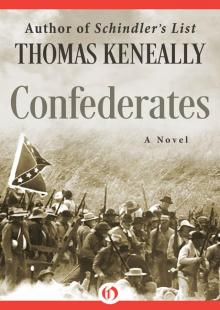 Confederates
Confederates Flying Hero Class
Flying Hero Class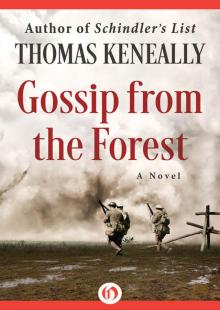 Gossip From the Forest
Gossip From the Forest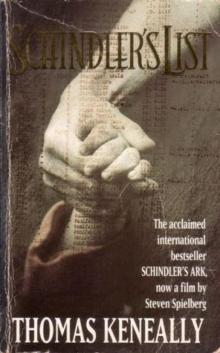 Schindler's List
Schindler's List Bring Larks and Heroes
Bring Larks and Heroes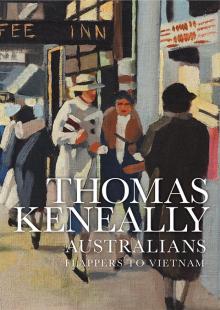 Australians: Flappers to Vietnam
Australians: Flappers to Vietnam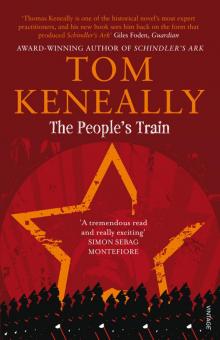 The People's Train
The People's Train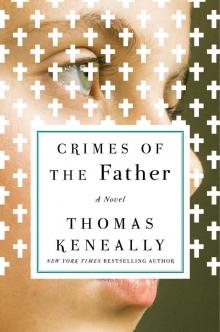 Crimes of the Father
Crimes of the Father A Family Madness
A Family Madness A Commonwealth of Thieves
A Commonwealth of Thieves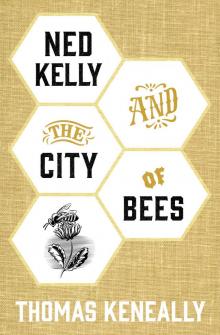 Ned Kelly and the City of Bees
Ned Kelly and the City of Bees A River Town
A River Town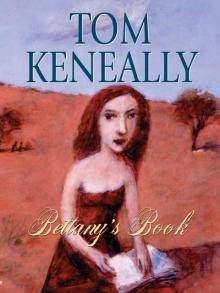 Bettany's Book
Bettany's Book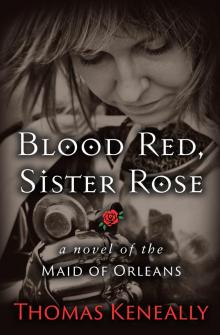 Blood Red, Sister Rose: A Novel of the Maid of Orleans
Blood Red, Sister Rose: A Novel of the Maid of Orleans Victim of the Aurora
Victim of the Aurora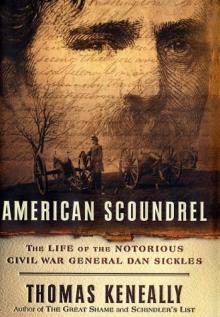 American Scoundrel American Scoundrel American Scoundrel
American Scoundrel American Scoundrel American Scoundrel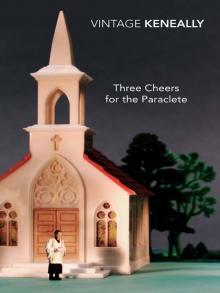 Three Cheers for the Paraclete
Three Cheers for the Paraclete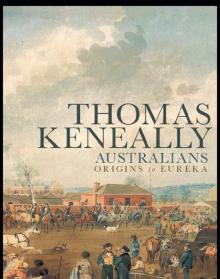 Australians: Origins to Eureka: 1
Australians: Origins to Eureka: 1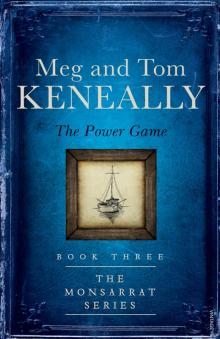 The Power Game
The Power Game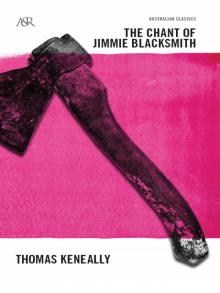 The Chant Of Jimmie Blacksmith
The Chant Of Jimmie Blacksmith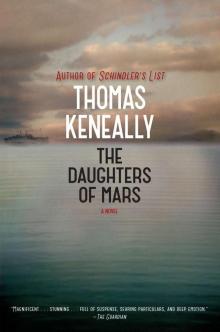 The Daughters of Mars
The Daughters of Mars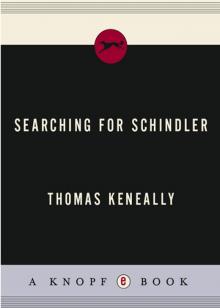 Searching for Schindler
Searching for Schindler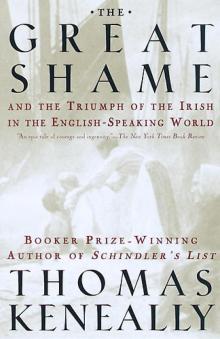 The Great Shame: And the Triumph of the Irish in the English-Speaking World
The Great Shame: And the Triumph of the Irish in the English-Speaking World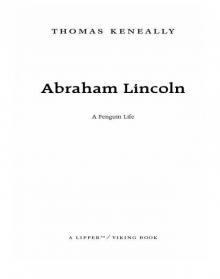 Abraham Lincoln
Abraham Lincoln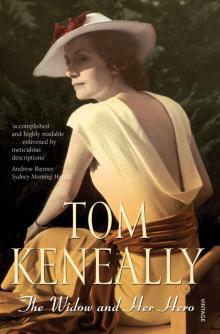 The Widow and Her Hero
The Widow and Her Hero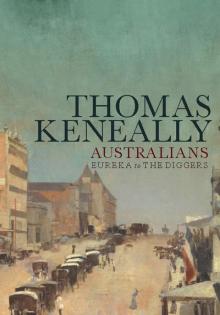 Eureka to the Diggers
Eureka to the Diggers Shame and the Captives
Shame and the Captives The Survivor
The Survivor Jacko: The Great Intruder
Jacko: The Great Intruder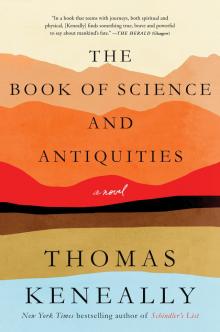 The Book of Science and Antiquities
The Book of Science and Antiquities Homebush Boy
Homebush Boy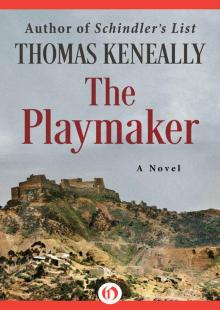 The Playmaker
The Playmaker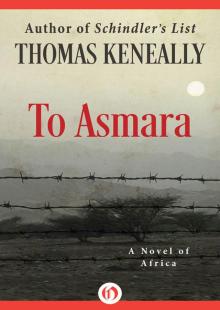 To Asmara: A Novel of Africa
To Asmara: A Novel of Africa A Woman of the Inner Sea
A Woman of the Inner Sea The Tyrant's Novel
The Tyrant's Novel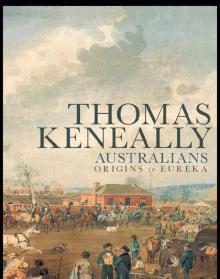 Australians
Australians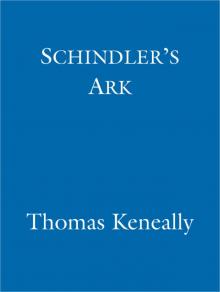 Schindler's Ark
Schindler's Ark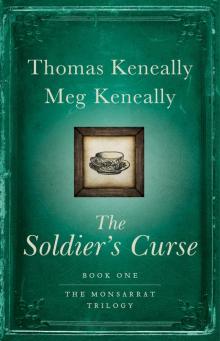 The Soldier's Curse
The Soldier's Curse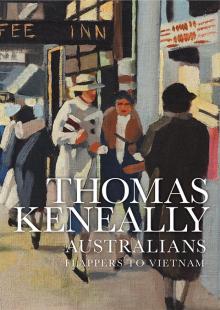 Australians, Volume 3
Australians, Volume 3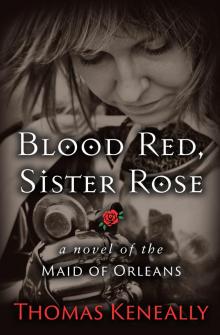 Blood Red, Sister Rose
Blood Red, Sister Rose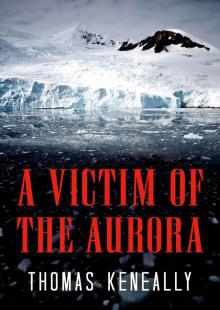 A Victim of the Aurora
A Victim of the Aurora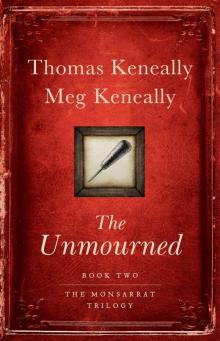 The Unmourned
The Unmourned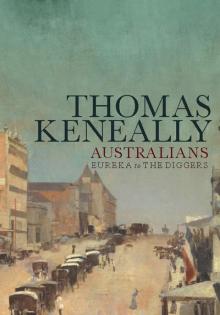 Australians, Volume 2
Australians, Volume 2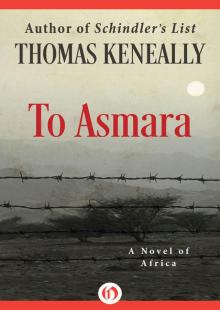 To Asmara
To Asmara